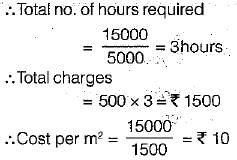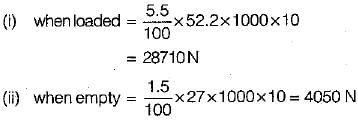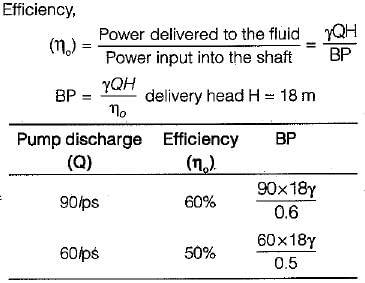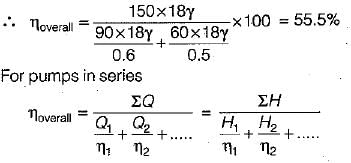Test: Engineering Equipments - 2 - Civil Engineering (CE) MCQ
10 Questions MCQ Test - Test: Engineering Equipments - 2
For cleaning and grubbing of construction site of 15000 m2 area, a bulldozer is used which has effective width of 2 m of the blade and an average speed of 2.5 kmph. If hiring charges of bulldozer are Rs. 500/hr., then cost per m2 is
The working range of a crane is limited horizontally for maximum lift only by
Which one of the following statements is correct?
The number of trips of a dumper per hour is given by
Consider the following statements:
1. The ideal output of a power shovel is achieved at 90° angle of swing.
2. Output from a power shovel is independent of size of trucks.
3. The optimum depth of cut of a power shovel is the one at which the dipper comes out with full load.
4. The optimum depth of cut does not vary with the size of the dipper of a power shovel.
Which of the statements given above are correct?
Consider the following statements:
When acquiring a crane for a project work, the important aspects of the specifications will include information on
1. length of hoist line
2. length of boom line
3. tipping condition
4. bucket size
5. angle of swing in absolute terms
6. haul distance
Which of the statements given above are correct?
Which of the following are taken into consideration in determining ultimate operating factor of a typical earthmoving equipment?
A scraper of self weight 27 tonnes works on sandy clay soil weighing 1800 kg/m3 of bank measure. Haul road rolling resistance is 3.5% and grade is 2% adverse for loaded unit. The earth carried per trip is 14m3 (b.m.). What rim pull, in newton (approximately) is required when travelling loaded and empty, respectively?
Two centrifugal pumps work in parallel at a common delivery head of 18m. The first pump delivers 90 /ps at an efficiency of 60% and the second pump delivers 60 /ps at an efficiency of 50%. What is the overall efficiency of the system?
Match List-I (Earth Excavating Equipment) with List-II (Uses) and select the correct answer using the codes given below the lists:
List-l
A. Power shovel
B. Hoe
C. Clamshell
D. Bulldozer
List-II
1. Excavation of earth in confined area or pit
2. Rehauling of loose or excavated material from one place to another place
3. Clearing and scrubbing of worksite
4. Excavation of trenches






















